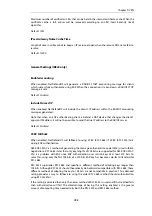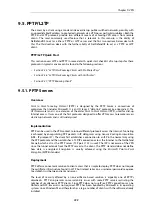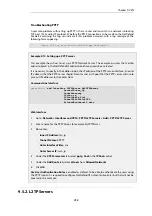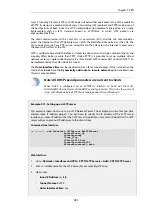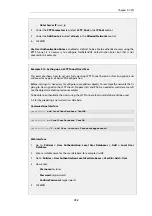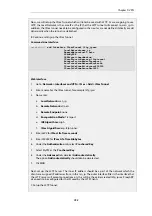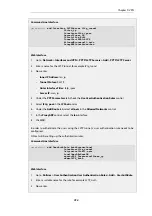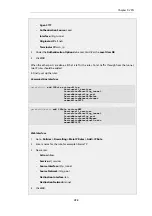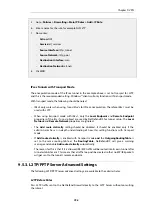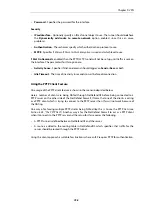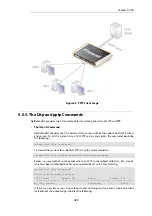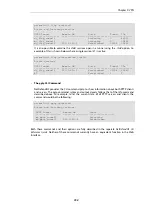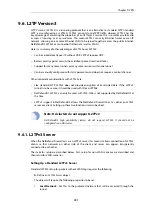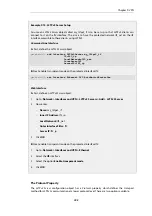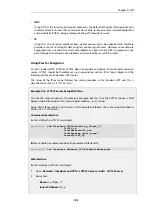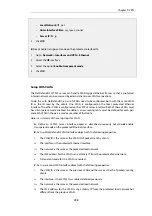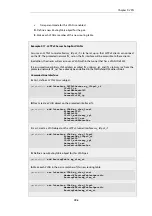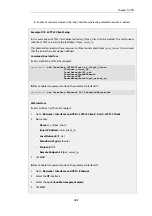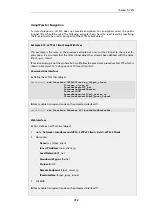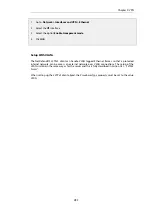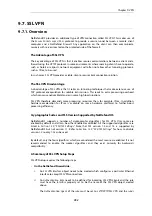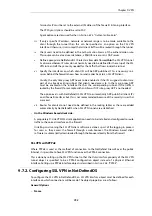
Figure 9.3. PPTP Client Usage
9.5.5. The l2tp and pptp Commands
NetDefendOS provides two CLI commands for monitoring the status of L2TP and PPP:
•
The l2tp CLI Command
NetDefendOS provides the CLI command
l2tp
to show information about both L2TP clients
and servers. To list the current state of all L2TP servers and clients, the command would be
the following:
gw-world:/> l2tp -state=all
To view all the sessions for a specific L2TP server, the syntax would be:
gw-world:/> l2tp -l2tpserver=<L2TP-server-object-name>
Below is an example of some output where an L2TP tunnel object called
my_l2tp_tunnel1
which has been established but has no connected clients so it is only listening.
gw-world:/> l2tp -state=all
Active and listening sessions
L2TP Tunnel
Remote GW
State
Tunnel
IDs
------------------
------------------ --------------- ----------------
my_l2tp_tunnel1
Listening
0
44555
If there are now two servers, one without clients (listening) and one with at least one client
(established), the output might look like the following:
Chapter 9: VPN
739
Summary of Contents for NetDefendOS
Page 30: ...Figure 1 3 Packet Flow Schematic Part III Chapter 1 NetDefendOS Overview 30 ...
Page 32: ...Chapter 1 NetDefendOS Overview 32 ...
Page 144: ...Chapter 2 Management and Maintenance 144 ...
Page 284: ...Chapter 3 Fundamentals 284 ...
Page 392: ...Chapter 4 Routing 392 ...
Page 419: ... Host 2001 DB8 1 MAC 00 90 12 13 14 15 5 Click OK Chapter 5 DHCP Services 419 ...
Page 420: ...Chapter 5 DHCP Services 420 ...
Page 573: ...Chapter 6 Security Mechanisms 573 ...
Page 607: ...Chapter 7 Address Translation 607 ...
Page 666: ...Chapter 8 User Authentication 666 ...
Page 775: ...Chapter 9 VPN 775 ...
Page 819: ...Chapter 10 Traffic Management 819 ...
Page 842: ...Chapter 11 High Availability 842 ...
Page 866: ...Default Enabled Chapter 13 Advanced Settings 866 ...
Page 879: ...Chapter 13 Advanced Settings 879 ...

